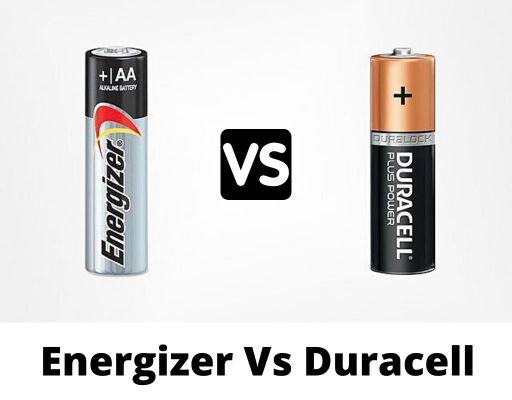The battery is an energy-supplying tool that converts chemical energy into electric energy. Mainly batteries are used in cameras, toys, watches, and portable electronics.
There are many types of batteries like- Lithium battery, Lead-acid battery, Alkaline battery, etc. CR123A battery is a lithium-based battery.
CR123A battery is also known as CR123, 123A, 123, etc. just varied from manufacturer to manufacturer. In this article, we will shed light on the question, Are all CR123A batteries the same? So, let’s get started on CR123A vs CR123.
What is a CR123A battery?
Simply CR123A batteries are 123A batteries where 123A batteries are referred to as “one battery that’s two-thirds the size of a standard A battery.”
It is a lithium-based cylindrical or can-shaped battery and provides high capacity and long life.
Specifications of CR123A batteries:
| Classification | Lithium |
| Nominal voltage | 3.2-3.3 Volts |
| Standard voltage | 2-2.5 Volts |
| Capacity (Lithium) | 1550 mAh (approximately) |
| Operating Temperature | -20°C-75°C |
| Height | 34.2mm |
| Width (diameter) | 17.00 mm |
| Weight | 16g |
| chemistry | Lithium Manganese Dioxide |
Where it is used?
For its high capacity and long lifetime, it is very popular and for this sometimes it becomes out of stock in the market. This battery is used in various applications- from medical devices to military-grade technology. Most popularly used in PIR (Passive Infrared) sensor devices like- security alarm, wireless security, home automation, smoke detector, illumination equipment, tactical equipment, etc.
What is a CR123 battery?
As earlier we have known that CR123 is no different than a CR123A battery without a few specifications. It is also a high-power Lithium-based cylindrical battery extensively used in security alarm systems.
Specifications of CR123 battery:
| Classification | Lithium |
| Chemistry | Lithium Manganese Dioxide |
| Nominal Voltage | 3V |
| Standard Voltage | 2V |
| Capacity | 2000 mAh |
| Weight | 16.5 g |
| Height | 34 mm |
| Width | 16.5 mm |
| Operating temperature | -20°C-70°C |
Where it is used?
Its application area is almost the same as CR123A. For its small size, it is used in small wireless devices like digital cameras with flashes and high-tech LED torches, etc.
Main Differences between CR123A vs CR123 Vattery
Size
Both CR123 and CR123A batteries are small in size and portable. The CR123 is generally longer and also thinner than CR123A.
Life span
The actual life span of the battery depends upon the devices and manufacturers. Before use, both the batteries have the same life span of up to 10 years at a temperature of less than 60°C.
Both the batteries are long-lasting though their life shelf varies from different applications of different devices.
For example, in alarm system devices these batteries last up to 5 years, and for the soldier’s weapon light which requires more energy generally lasts for less than a month.
Voltages
There isn’t much difference in voltage between the two batteries. From the specifications, we’ve known that CR123 & CR123A have a nominal voltage of 3V and their standard voltage is 2V approximately.
These two types of batteries can supply high electricity through a small device.
Chemistry
CR123 and CR123A both are Lithium-based batteries.
In these battery cells generally, the electrolyte is made with Lithium based salt-like “Lithium and Manganese dioxide (LiMnO2)”.
The positive terminal or cathode is made of Manganese Dioxide.
The whole chemical reaction works in the same way in both batteries, which provides high-capacity energy density 280 Wh/kg (per mass) and 580 Wh/liter (per volume)
NOTE: Wh (watt-hour) is a unit for measuring the energy density in a battery.
Safety:
- As CR123 & CR123A are both high-capacity batteries, their high voltage can damage devices.
- The main chemical of the battery means Lithium is a dangerous chemical. If it comes out of the battery anyhow and comes to the contact of skin it is hazardous.
Though both the batteries are designed with PTC that means Pressure, Temperature, and Current protection which disconnects the circuit if the current gets too high.
Types of CR123A battery based on rechargeability
On thebasis of rechargeability CR123 batteries are two types-
- Non-rechargeable CR123 batteries
- Rechargeable RCR123 batteries
Previously we have discussed non-rechargeable CR123 batteries, they are mainly Lithium-based primary batteries.
Rechargeable CR123 batteries are Lithium-ion batteries that can be recharged. This are also known or labeled as CR17345, K123A, RCR16340, VL123A, DL123A, 5018LC, SF123A, EL123AP, 17345, 17340, 16340, 16650,18650 etc.
Specifications of RCR123/ RCR123A batteries
16650 Cylindrical Rechargeable Batter
These are Lithium-ion based battery providing 3.7V voltage having a capacity of 2400 mAh. Generally, its height is 65 mm and its width is 16 mm.
16340 Rechargeable battery:
16340 are also the Lithium-ion based battery, its specifications-
Voltage 3.7 V, capacity 700-1000 mAh, battery dimension is 34×16 mm, chemistry- Lithium carbon dioxide.
18650 Cylindrical Rechargeable Battery:
18650 rechargeable batteries are cylindrical or can-shaped Lithium-ion based battery providing voltage 3.6-3.7V, having a height of 35mm & width of 18mm.
So, we can see that the rechargeable CR123 battery’s features slightly vary from manufacturer to manufacturer.
Manufacturers of CR123 & CR123A battery
For the highcapacity and small size these batteries are popular and nowadays many manufacturers are producing CR123/CR123A batteries. Some significant manufacturers are- Panasonic, Eveready, Sanyo, Rayovac, Procell, Energizer, Duracell, etc.
Bottom Line
From the elucidated discussion we have known that CR123 & CR123A are the same batteries with the modified name.
With almost the same specifications different manufacturers produce almost the same batteries with different labels.
It depends on your use case to determine which one is suitable for your between CR123A vs CR123.
CR123 batteries are of two types- rechargeable e & non-rechargeable. Rechargeable and non-rechargeable batteries are different from their specifications. Their main distinction is in output voltage, where RCR123 has 3.6-3.7V nominal voltage, the CR123 has 3.0 V.
Related Posts:



